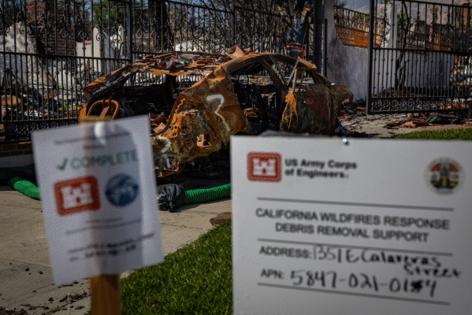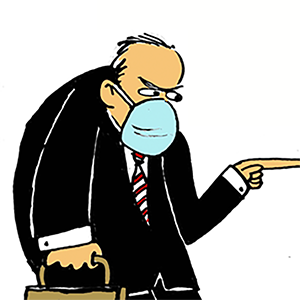LA will set aside $3 million to help owners of fire-damaged homes test their soil for lead
Published in News & Features
LOS ANGELES — The Los Angeles County Board of Supervisors will allocate $3 million to help homeowners near the Eaton burn area test for lead contamination, after preliminary tests found elevated levels of the heavy metal on homes standing after the fire.
Supervisors Kathryn Barger and Lindsey Horvath proposed the motion after preliminary test results released last week by the Los Angeles County Department of Public Health showed lead levels above state health standards in as many as 80% of soil samples collected downwind of the Eaton burn scar.
On Tuesday, the board voted 4-0 to direct $3 million from the county’s 2018 $134-million settlement with lead-paint manufacturers to test residential properties that are both downwind and within one mile of the Eaton burn scar boundary.
Lead is a heavy metal linked to serious health problems including damage to the brain and nervous system, as well as digestive, reproductive and cardiovascular issues, according to the Environmental Protection Agency.
Roux Associates, a private testing firm hired by the county, collected samples from 780 properties in both burn zones over four weeks from mid-February to mid-March. It tested for 14 toxic substances commonly found after wildfires: heavy metals such as arsenic and lead; polyaromatic hydrocarbons such as anthracene and napthalene; and dioxins.
More than one-third of samples collected within the Eaton burn scar exceeded California’s health standard of 80 milligrams of lead per kilogram of soil, Roux found. Nearly half of samples just outside the burn scar’s boundary had lead levels above the state limit. And downwind of the fire’s boundary, to the southwest, between 70% and 80% of samples surpassed that limit.
In the Palisades burn area, tests found little contamination beyond some isolated “hot spots” of heavy metals and polyaromatic hydrocarbons, Roux’s vice president and principal scientist Adam Love said last week.
Nichole Quick, chief medical advisor with the L.A. County Department of Public Health, said at the time that officials would be requesting federal and state help to further assess the Palisades hot spots, and working with the county on targeted lead testing in affected areas downwind of the Eaton fire.
The county is for now shouldering the responsibility of contaminant testing because, as The Times has reported, the federal government has opted to break from a nearly two-decade tradition of testing soil on destroyed properties cleaned by the U.S. Army Corps of Engineers after fires.
After previous wildfires, the Army Corps would first scrape 6 inches of topsoil from cleared properties and then test the ground underneath. If those tests revealed toxic substances still on the property, it would scrape further.
After the devastating Camp fire in Paradise in 2018, soil testing of 12,500 properties revealed that nearly one-third still contained dangerous levels of contaminants even after the first 6 inches of topsoil were scraped by federal crews.
L.A. County ordered testing from Roux in lieu of that federal testing. So far, the county has announced results only from standing homes, which are not eligible for cleanup from the Army Corps of Engineers; results from land parcels with damaged or destroyed structures are still pending.
FEMA’s decision to skip testing after L.A.’s firestorms has frustrated many residents and officials, with some calling for the federal agency to reconsider.
“Without adequate soil testing, contaminants caused by the fire can remain undetected, posing risks to returning residents, construction workers, and the environment,” the state’s Office of Emergency Services director Nancy Ward wrote in a February letter to FEMA. “Failing to identify and remediate these fire-related contaminants may expose individuals to residual substances during rebuilding efforts and potentially jeopardize groundwater and surface water quality.”
©2025 Los Angeles Times. Visit at latimes.com. Distributed by Tribune Content Agency, LLC.







Comments